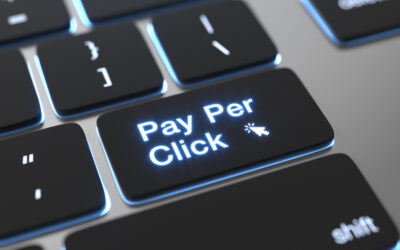“Inflation is as violent as a mugger, as frightening as an armed robber, and as deadly as a hit man.” – Ronald Regan.
If you are in the retail business, you have likely experienced price increases from suppliers over the past several months. For retailers in 2022-23, inflation leads to cash flow disruption, excess inventory, high storage costs, lower revenues, reduced margins, and stress.
- Economists and the National Retail Federation still expect U.S. retail sales to increase 6% and 8% compared to 2021.
Unfortunately, high inflation and recession prospects change consumers’ behavior regarding how, when, and what to spend money on, with retailers bearing the strain. However, take solace in knowing there is a light at the end of the tunnel, as we can be confident that high inflation and recessions do not last forever. This blog discusses three strategies retailers can use to soften the impact on their retail business. They are as follows:
-
- Reduce operational costs by investing in Self-Checkout technology
- Adapt pricing strategies that focus on competitiveness and providing value to customers
- Implementing TimeWellScheduled’s cloud-based scheduling software to optimize labor costs
I) The Benefits of Self Check-Out or Kiosk Technology
Reduction in operational and labor costs are the main benefits of self-checkout kiosks. Most of the capital expenditure associated with acquiring self-checkout machines can be recouped over six to twelve months for every cashier it replaces. During the Great Resignation of 2021, grocery stores needed new and reliable ways to serve customers. No longer could grocery stores fully staff check-out lanes for an efficient customer experience.
One cashier can oversee four to six Kiosks at once with self-checkout kiosks. This reduces the number of labor hours retailers would allocate to check-out employees. Moreover, this allows employers to reallocate employees to serving customers in other parts of their business or reduce the payroll altogether.
How much does a self-checkout machine cost?
According to FrankMayer, depending on the type of unit your business requires, the typical price range for a standard self-service kiosk costs between $1,500 to $5,000.
Are self-checkouts more efficient?
The Washington Post experimented and found that, on average, checking out with five items through a self-checkout station took less than two minutes. Compare this to waiting in a long line with five items at a grocery store that doesn’t have a self-checkout option.
Are self-checkouts good for customers?
Kiosk stations allow more customers to check out at once without additional staffing, speeding up the rate of processing orders. So, check-out feels more efficient when consumers do it themselves instead of waiting in line. Even so, in the following studies, Soocial.com found that consumer’s views on self-serve machines to be:
- 85% of customers think self-checkout is faster than waiting in line.
- 80% of shoppers prefer a non-traditional check-out.
- 66% of consumers prefer self-service options over interacting with store employees.
- 58% of customers have used self-checkout tools.
In addition, in part due to the Covid-19 pandemic, self-service check-out kiosks make retail shoppers feel safer when purchasing because they can operate the machine without involving others during the transaction. Also, they maintain a private presence while taking advantage of your company’s goods and services.
II) Pricing Strategies During Periods of High Inflation
“Consumers are estimated to spend 6.7% more during the holidays this year than they did in 2021; 43% are looking for deals and promotions, according to the ICSC. And 65% of respondents plan to spend more time looking for discounts” – Caroline Jansen.
Avoid Slashing Prices & Liquidating Stock
The most obvious impact of inflation is that it hurts consumer purchasing power. If you can’t buy as many goods and services as you did before inflation, your quality of living eventually diminishes. During periods of high inflation, consumers naturally start looking for bargains.
- ICSC holiday 2022 survey released last month revealed that nearly 90% of respondents reported that inflation would affect their holiday spending.
Retail managers and owners are often tempted to reduce prices to retain customers and perhaps even gain a few new ones. Moreover, while price cuts may lead to short-term boosts in revenue, they will most certainly impact future pricing decisions and autonomy.
“If I start discounting and that feels like it’s more of a permanent and prolonged thing, you start shape-shifting the way that consumers perceive your brand.” – Tyler Higgins, Pricing Lead, AArete.
This is the danger with price-cutting strategies during recessionary times is that it leads to reduced profit margins or losses as consumer (psychological) expectations change to match or get accustomed to (artificially) low priced products. For these reasons, many retail experts recommend a combination of three pricing strategies to help deal with inflation:
- Cost-plus pricing: Use this strategy with managed margins for “common” retail goods
- Competitive Pricing: Use this strategy to match and manage cost-plus inventory
- Value-based pricing: Apply this strategy to the business’s core items.
Cost-plus pricing model
The cost-plus pricing strategy calculates the cost of products and adds a percentage profit margin to determine the price. During inflationary times, cost-plus pricing means companies will increase product prices concurrently with the increase in the costs of goods. This strategy simplifies the planning, management, and implementation of price changes. For instance, when prices increase due to inflation, businesses can either reduce margins, raise prices or implement a combination of both.
Competitive pricing model
Competitive pricing strategies set prices based on what the competition is doing. The goal is to be cheaper or similar enough that consumers do no stress over lost utility. There are three main types of competitive pricing approaches (ProfitWell.com):
- Low price: set prices lower than your competitors.
- High price: set prices higher than your competitors.
- Matched price: align prices with competitors (most large retailers offer this option)
During times of inflation, competitors manage prices in a way that retains or increases business. Therefore, it is critical to keep the competition’s pricing tactics in mind. This knowledge will allow you to distinguish yourself from the them.
Value-based Pricing Strategy
“Most pricing experts believe that pricing based on value (the economic or psychological benefits delivered by your product or service) is much more effective than a competitor, cost, or customer-driven pricing strategy.” – Moira McCormick.
A Value-based pricing strategy bases prices on a consumer’s perceived value of a product or service. Value-based pricing ensures that your customers are satisfied with paying your price so long as they get their desired value. Consider the following questions when implementing value-based pricing:
-
- How do customers perceive the product’s value?
- How interested are consumers in the product?
- Do customers understand the value that the product offers?
- How do retail businesses communicate that value?
By pricing goods according to the value consumers associate with the product, retailers prevent short-changing customers while creating an experience that aligns with consumer goals and expectations. The following are three things to consider when introducing value-based pricing:
-
- Customer-focused product offerings: Create a low-value, low-cost option with fewer features that still serve customer needs.
- Reduce the pain of price increases: Limit price increases on the most popular items, which means that when customers pay more, it’s on items they don’t buy daily.
- Connect price changes to economic realities: Do not hesitate to discuss the reasons why prices are higher than usual. For example, a fuel surcharge makes sense if your business relies heavily on transportation to ship products. Communicating transparently allows customers to build trust by understanding the business’s position.
III) Implementing TimeWellScheduled’s Cloud-Based-Scheduling Software
TimeWellScheduled scheduling provides several benefits to businesses during periods of increased inflation or recession. First, the software ensures shifts are adequately covered when traffic is high and minimized when it is low. Secondly, TimeWellscheduled ensures that employees are not punching in early, leaving late, buddy punching or working unnecessary over-time. Lastly, TimeWellScheduled reduces administrative tasks and errors and saves managerial time and money. This solution is perfect during recessionary periods as it maximizes employee efficiency and eliminates unnecessary costs!
“I’ve been on the TimeWellScheduled program for over 5 months and notice amazing savings in the unproductive punching in early, punching out late or extended breaks. This system allows all managers to control these areas for each staff member.” – Jody O. General Manager, Canadian Tire
Optimize Employee & Managerial Productivity
Scheduling immensely impacts the personal and work lives of hourly employees, from income to daily routines and off-days, so it is vital to get it right. Typically, manual employee scheduling systems utilize spreadsheets to track and manage staff shifts. Spreadsheets are adequate when there are a small number of employees. However, the process becomes cumbersome and time-consuming when the number of employees increases and spreads across several locations or branches.
In addition to scheduling complexity, manual staff scheduling and workforce management processes make keeping and maintaining accurate records of employee hours and attendance challenges. Inconsistencies and errors invariably place companies at risk of labor law violations, fines, and damaged reputations. TimeWellScheduled’s time and attendance solution, for example, effectively executes standardized and repeatable administrative processes such as time tracking, employee attendance, shift scheduling, and payroll processing – seamlessly.
By reducing or eliminating the manually intensive tasks that are better handled with cloud-based time and attendance software, managers and employees can reallocate themselves to higher-priority responsibilities. This produces savings directly on labor costs and indirectly on potential hiring and retention activities as voluntary turnover reduces
Improved Access & Efficiency
A Cloud-based time and attendance system allow employees to access their schedules using their mobile phones or employee portal via PC. This feature provides employees the ease of viewing their schedule remotely 24/7. For instance, TimeWellScheduled’s cloud-based system allows employees to:
- check their schedule
- pick up an open shift
- request extra shifts
- swap shifts with a coworker
- request time off
TimeWellScheduled’s self-serve system functions seamlessly and provides all parties with the confidence that request(s) will receive the proper managerial attention. What’s more, cloud-based scheduling solutions eliminate manual processes and streamline decision-making based on accurate and up-to-date data.
“Very easy to use and well worth the low cost for the time it saves me. I can get in quickly, do what I need to do quickly, and get off so that I have lots of time to attend to my clients.” Colin R. Manager, Information Services
Scheduling, HR, and Payroll Integration
An integrated human resources and payroll system is a software solution that merges payroll and HR activities for maximum accessibility and efficiency. Integrated scheduling and payroll systems make sense for businesses utilizing multiple interdependent systems that do not communicate with each other. The following are examples of benefits resulting from system integration:
Simplified Data Entry
Integrated scheduling and HR payroll system means you only enter employee information once. In addition, the integration ensures that the data is accessible and up-to-date when it is required.
Generating Payroll Reports
Integrated HR payroll systems allow managers to generate payroll reports providing information regarding overtime trends, payroll accuracy, and hours scheduled versus hours worked-reconciliations.
Employee Self-Service
Integrated payroll software enables employees to view and verify payroll information from their mobile devices or pc. This allows them to check for accuracy before receiving their paychecks.
Increased Payroll Accuracy
The time and attendance systems automatically integrate scheduling information and updates into payroll, eliminating (manual input) errors and the possibility of duplicate data entry.
“As sure as the spring will follow the winter, prosperity and economic growth will follow recession.” – Bo Bennett
Although retailers feel the pressure of high inflation, some measures can be taken to ease this pressure. By reducing costs where possible, adapting pricing strategies, and implementing TimeWellScheduled’s cloud based scheduling solution, retailers can keep their businesses afloat during these turbulent times. With some effort and planning, retailers can ride out this storm and come out on top. Are you prepared for high inflation? Let us know how we can help.
Thank you for reading our article!
#TimeWellScheduled is a secure, online time and attendance software that is 100% tailored to meet your scheduling needs! In addition, #TimeWellScheduled facilitates employee attendance tracking & payroll tasks and enhances staff management capabilities. Plus, our service is free for up to 10 employees!
Click: here to download our (Excel) employee scheduling template; IT’S FREE!





